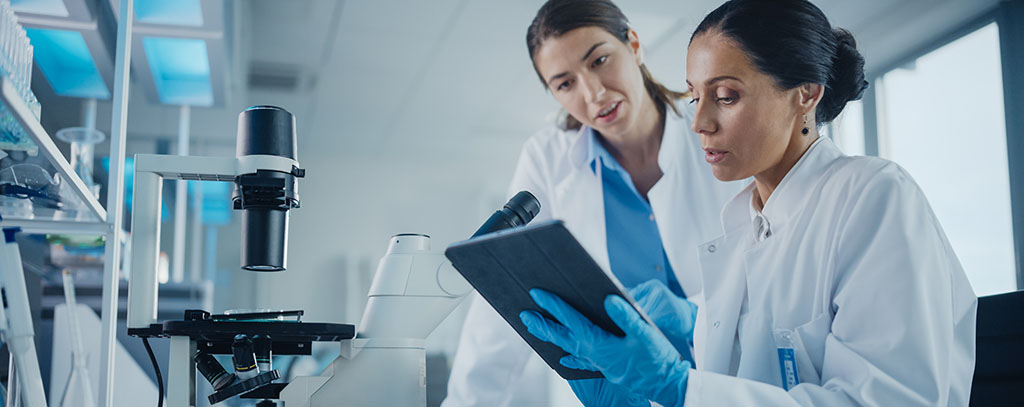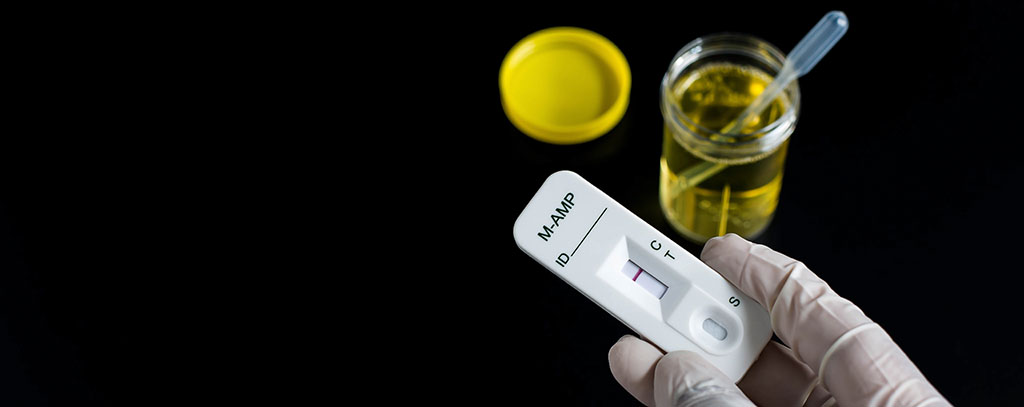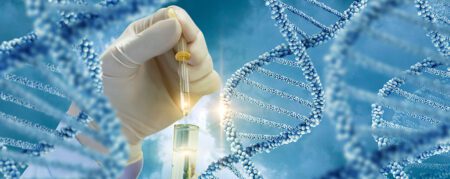


Understanding the Cost of a 10 Panel Drug Test for Companies
April 16, 2023


What is an ETG Test? Comprehensive Guide for Companies
April 17, 2023How long can an etg test detect alcohol? This question is crucial for companies seeking to implement a reliable and accurate method of detecting alcohol consumption among employees. EtG (ethyl glucuronide) testing offers an advanced solution, capable of identifying even trace amounts of alcohol in various samples.
In this blog post, we will explore the different types of EtG tests available - urine-based, blood-based, hair and nail-based - as well as factors affecting their detection timeframes such as metabolism rate and consumed dose size. We'll also discuss potential false negatives and positives that may arise from these tests.
Furthermore, we will delve into how water consumption affects detection timeframes while examining laboratory methods used to identify sample tampering. Finally, learn about implementing EtG testing in the workplace by consulting experts and understanding its limitations when screening employees. By the end of this article, you will have a comprehensive understanding of how long can an etg test detect alcohol and its practical applications within your organization.
Table of contents
- The Science Behind EtG Alcohol Testing
- How EtG Tests Work
- Factors Affecting Detection Timeframes
- False Negatives with EtG Tests
- Understanding False Positives
- Flushing Out EtG and Tampering Detection
- Implementing EtG Testing in Workplace Programs
- Frequently Asked Questions How Long Can an Etg Test Detect Alcohol
- Conclusion
The Science Behind EtG Alcohol Testing
Ethyl glucuronide (EtG) testing is a highly accurate method for detecting recent alcohol consumption, even if it occurred several days ago. This test detects the presence of EtG in urine, blood, hair, and nails and is often used to document abstinence from alcohol in various situations such as individuals younger than the legal drinking age or members of the Armed Forces. In this section, we will explore how EtG tests work and discuss different types of samples used for testing.
How EtG Tests Work
EtG is a direct metabolite of ethanol that forms when alcohol is broken down by enzymes in the liver. It can be detected long after other markers like breathalyzer test results have returned to normal levels because it remains present in bodily fluids longer than alcohol itself. The detection window for an etg test depends on factors such as metabolism rate and amount consumed but typically ranges between 24-80 hours after drinking alcoholic beverages.
Different Types of Samples Used for Testing
- Urine samples: Urine-based etg tests are considered non-invasive methods commonly utilized due to their ease-of-use and affordability compared with other sample types like blood or hair analysis.
- Blood samples: Blood-based etg tests offer increased accuracy over urine tests; however, they require more invasive collection procedures which may not always be feasible depending on individual circumstances.
- Hair samples: Hair follicle testing offers extended detection windows up to three months post-alcohol consumption but requires specialized laboratory equipment making them less accessible for routine testing.
- Nail samples: Nail-based etg tests can detect alcohol abuse over a period of several months, but they are less commonly used due to the difficulty in obtaining and processing nail clippings.
In conclusion, understanding the science behind EtG alcohol testing is crucial for companies looking to implement effective drug testing programs. By selecting appropriate sample types and considering factors that may affect detection windows, employers can make informed decisions about incorporating these tests into their workplace policies.
The science behind EtG alcohol testing is a complex and multifaceted topic, but understanding the basics of how it works can help businesses make informed decisions when purchasing drug testing supplies. Factors such as metabolism rates and correlations between alcohol consumption levels have an impact on detection timeframes, so let's take a closer look at these aspects in more detail.
Factors Affecting Detection Timeframes
The detection window for EtG tests varies depending on factors such as an individual's metabolism rate; however, 500ng/mL is generally considered appropriate within criminal justice settings. A positive correlation exists between the magnitude of consumed alcoholic dose and obtaining a positive result on an EtG test while there is a strong negative correlation between waiting periods before taking an ETg test and obtaining a positive result.
Metabolism Rates Affecting Detection Times
Metabolism rates can vary depending on various factors such as age, gender, weight, liver function and overall health status. Gender, weight, liver function and overall health status can all influence an individual's metabolic rate and thus how quickly alcohol is eliminated from their system. Generally speaking, individuals with faster metabolisms will process ethyl glucuronide (EtG), the primary biomarker used in EtG testing more quickly than those with slower metabolisms.
- Age: Older adults tend to have slower metabolic rates compared to younger individuals.
- Gender: Men typically have higher metabolic rates than women due to differences in body composition.
- Liver Function: Individuals with impaired liver function may take longer to eliminate alcohol from their systems because the liver plays a crucial role in breaking down ethanol into its byproducts like EtG.
Correlations Between Alcohol Consumption Levels and Results
The amount of alcohol consumed also affects the detection time frame for EtG tests. Higher levels of alcohol consumption typically result in higher concentrations of EtG, which can be detected for longer periods. Conversely, lower levels of alcohol intake may produce lower EtG concentrations that are more challenging to detect after a certain period.
For example:
- Heavy Drinking: After consuming large amounts of alcoholic beverages, EtG may remain detectable in urine samples for up to 80 hours or even longer.
- Moderate Drinking: In cases where an individual consumes moderate amounts of alcohol, the detection window might range from 24-48 hours post-consumption.
- Social Drinking: For individuals who engage in light social drinking (1-2 drinks), it is possible that EtG will not be present at detectable levels beyond 12-24 hours following their last drink.
In summary, various factors influence how long an EtG test can accurately detect alcohol consumption. Understanding these factors and considering them when interpreting test results is essential for companies looking to implement effective drug testing programs using this method.
It is important to understand the various factors that can affect detection timeframes when using an EtG test, as this will help determine accurate results. It is imperative to be cognizant of the potential for erroneous negatives when using an EtG test, so as to make sure results are interpreted precisely.
False Negatives with EtG Tests
Despite its high accuracy rates (approximately 70% or higher), there remains potential for false negatives associated with these tests. A study involving nineteen healthy adults tested eight times over 102 hours following alcohol consumption revealed that all samples collected more than 26 hours after drinking produced false-negative results using an 80-hour Ethyl Glucuronide Test.
Study Findings on False Negatives
- The study participants consumed a moderate amount of alcoholic beverages, which led to positive EtG test results within the first few hours after drinking.
- However, as time passed and the body metabolized the alcohol content, detection became increasingly difficult due to diminishing levels of ethyl glucuronide in urine samples.
- This finding suggests that individuals who stop drinking well before taking an EtG test may still receive negative results despite having recently consumed alcohol.
Limitations When Interpreting Results
In light of these findings, it is essential to consider several factors when interpreting EtG test results:
- Moderate Alcohol Consumption: The study mentioned above focused on moderate drinkers; therefore, heavy drinkers might have different outcomes when undergoing etg testing. It is essential to recognize that the interpretation of EtG test results may vary depending on individual circumstances.
- Detection Window Variability: Although most sources claim that EtG tests can detect alcohol consumption up to 80 hours post-drinking, recent research has shown that this detection window can vary significantly depending on factors such as metabolism rates, alcohol consumption levels, and the specific testing method used.
- Interference from Other Substances: Some medications or supplements may interfere with EtG test results, leading to false negatives. It is essential to inform the laboratory of any substances taken before providing a urine sample for etg alcohol testing.
In conclusion, while EtG tests are valuable tools in detecting recent alcohol consumption and promoting abstinence among certain populations, it's important to recognize their limitations when interpreting results. False negatives can occur due to various factors; therefore, relying solely on these tests might not provide an accurate representation of an individual's true drinking habits.
False negatives with EtG tests can be difficult to interpret and may not always provide accurate results. Yet, it is critical to be aware of the likelihood for false positives too in order to accurately gauge test outcomes.
Understanding False Positives
While EtG alcohol testing is highly accurate, there are possibilities for false positives due mainly to the presence of trace amounts of ethanol in many everyday products. It's critical to be mindful of these potential causes and comprehend their effect on test outcomes.
Everyday Products That Can Cause False Positives
- Hand sanitizers: Many hand sanitizers contain alcohol, which can be absorbed through the skin or inhaled.
- Mouthwash: Alcohol-based mouthwashes can lead to a positive EtG test result if used shortly before providing a urine sample.
- Certain medications: Some over-the-counter and prescription medications contain small amounts of alcohol that could trigger a false positive on an EtG test.
- Foods cooked with alcoholic beverages: Consuming dishes prepared with wine, beer, or other alcoholic beverages might contribute to a positive result even though the actual alcohol content consumed is minimal.
A "high" positive EtG test result (>1,000ng/mL) may indicate heavy drinking within the last one to three days or light drinking within the last 12-36 hours but could also signify recent exposure to environmental products containing alcohol. Therefore, it's crucial not only for individuals being tested but also for employers and healthcare professionals interpreting these results to consider all possible factors contributing to elevated levels detected by an etg tests.
Interpreting High Positive EtG Test Results
To minimize confusion surrounding high-positive results from etg testing caused by incidental exposure rather than intentional consumption of alcoholic beverages, some experts recommend using cutoff values higher than those typically used in criminal justice settings. Cutoff values higher than those typically used in criminal justice settings, such as 1,000ng/mL or even 2,000ng/mL to reduce false positives from incidental exposure, may be more appropriate for workplace testing programs.
When interpreting EtG test results, it's essential to consider an individual's history and any potential sources of alcohol exposure that could lead to a false positive result. If there is any uncertainty regarding a positive test outcome, additional testing such as BAC or breathalyzer tests can be done to acquire more details on current alcohol consumption levels.
It is important to understand false positives when interpreting EtG test results, as everyday products can cause a high positive result. Moving on from this understanding of false positives, it is also essential to be aware of how flushing out EtG and detecting tampering are factors that influence the accuracy of drug testing supplies.
Flushing Out EtG and Tampering Detection
Although consuming water can help flush out EtG from an individual's system more rapidly, laboratories are often able to detect any tampering with urine samples. It is essential to recall that this test's primary purpose is not gauging exact amounts of consumed alcoholic drinks but rather showing whether any alcohol has been taken in at all.
Laboratory Methods for Detecting Sample Tampering
To ensure accurate results during etg tests, laboratories employ various methods to identify potential tampering or adulteration attempts within collected urine samples. Some common techniques include:
- Temperature testing: Urine samples should be within a specific temperature range (typically between 90°F and 100°F) to confirm that they are fresh and have not been tampered with.
- pH level analysis: A urine sample's pH level is measured to detect any attempts at adulteration using acidic or alkaline substances. Normal human urine has a pH ranging from 4.5 to 8, so anything outside this range could indicate tampering.
- Creatinine levels: Creatinine is a waste product naturally present in human urine. Abnormally low creatinine levels may suggest dilution or substitution of the sample.
In addition to these methods, laboratories also utilize advanced technologies such as mass spectrometry and gas chromatography for accurate detection of EtG presence in collected samples, ensuring reliable results even when individuals attempt to manipulate their test outcomes through hydration or other means.
Flushing out EtG and detecting sample tampering is an essential step in ensuring accurate results from workplace drug testing programs. To ensure successful implementation of these tests, it's important to consult experts when implementing workplace testing and explore alternative methods for assessing employee impairment.
Implementing EtG Testing in Workplace Programs
Employers considering implementing EtG alcohol testing should consult toxicologists or healthcare professionals before making decisions about incorporating these tests into their workplace drug testing programs. It is essential to understand that EtG tests do not measure current impairment from alcohol, but rather indicate whether any alcohol consumption has occurred within a specific timeframe.
Consulting Experts When Implementing Workplace Testing
To ensure the effectiveness and accuracy of your company's drug testing program, it is crucial to seek advice from experts in the field. Consulting with toxicologists or healthcare professionals can help you determine if EtG tests are appropriate for your organization and how they should be implemented alongside other methods of detecting substance abuse. You may also want to consider reaching out to companies specializing in providing drug testing supplies, as they can offer valuable insights on various test options available.
Alternative Methods for Assessing Employee Impairment
In addition to using EtG tests for detecting past alcohol consumption, employers should also implement alternative methods for assessing employee impairment levels due to recent drinking. One such method is the use of a breathalyzer test, which measures an individual's blood-alcohol content (BAC) at the time of assessment:
- Breathalyzer Test:A quick and non-invasive way of determining an individual's BAC by analyzing their breath sample. This test provides immediate results and helps identify employees who may be under the influence while on duty.
If urine samples are preferred over breath analysis, another option could be screening for ethyl sulfate (EtS), another biomarker found after consuming alcoholic beverages:
- EtS Testing: Similar to EtG testing, this method detects the presence of ethyl sulfate in urine samples. While it has a shorter detection window than EtG tests, it can still provide valuable information about recent alcohol consumption and help identify employees who may be violating company policies.
In conclusion, implementing an effective workplace drug testing program requires careful consideration of various factors such as test accuracy, employee privacy concerns, and legal implications. By consulting with experts and exploring alternative methods for assessing impairment levels due to alcohol abuse, employers can create a comprehensive approach that promotes safety and well-being within their organization.
Frequently Asked Questions How Long Can an Etg Test Detect Alcohol
What is the cutoff level for EtG urine test?
The cutoff level for an EtG urine test typically ranges from 100 to 500 nanograms per milliliter (ng/mL). However, most laboratories use a threshold of 100 ng/mL as it provides a balance between sensitivity and specificity in detecting recent alcohol consumption.
How long can Labcorp detect alcohol?
Labcorp's EtG testing can detect alcohol metabolites in urine samples up to approximately 80 hours after ingestion. The detection window may vary depending on factors such as individual metabolism rates, hydration levels, and the amount of alcohol consumed.
Is the EtG test for alcohol unreliable?
The EtG test is generally reliable when used correctly. However, there are limitations that could lead to false positives or negatives. Factors like exposure to everyday products containing ethanol or sample tampering may affect results. Proper interpretation of results and consultation with experts help ensure accurate conclusions.
How much EtG is produced per drink?
The amount of EtG produced per drink varies among individuals due to differences in metabolism rates and other factors. On average, one standard alcoholic beverage generates approximately 15-20 mg of urinary ethyl glucuronide (EtG).
Conclusion
An ETG test is a reliable and accurate way to detect alcohol in the body. It can provide results that are up to 80 hours after consumption, making it an ideal choice for companies looking for drug testing supplies. Although there may be potential drawbacks associated with using this type of test, its accuracy makes it worth considering when selecting appropriate drug testing supplies. Ultimately, understanding how long an ETG test can detect alcohol will help businesses make informed decisions about which products best meet their needs.
Discover how Halux Diagnostic's drug testing supplies can help you detect alcohol in a person for up to 80 hours with an EtG test. Take the first step towards accurate results and contact us today.





